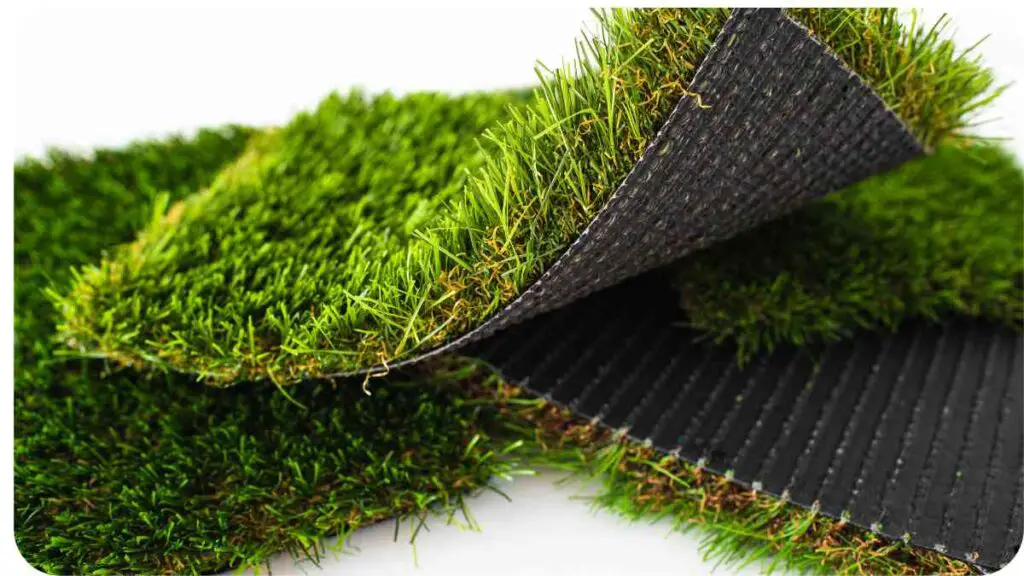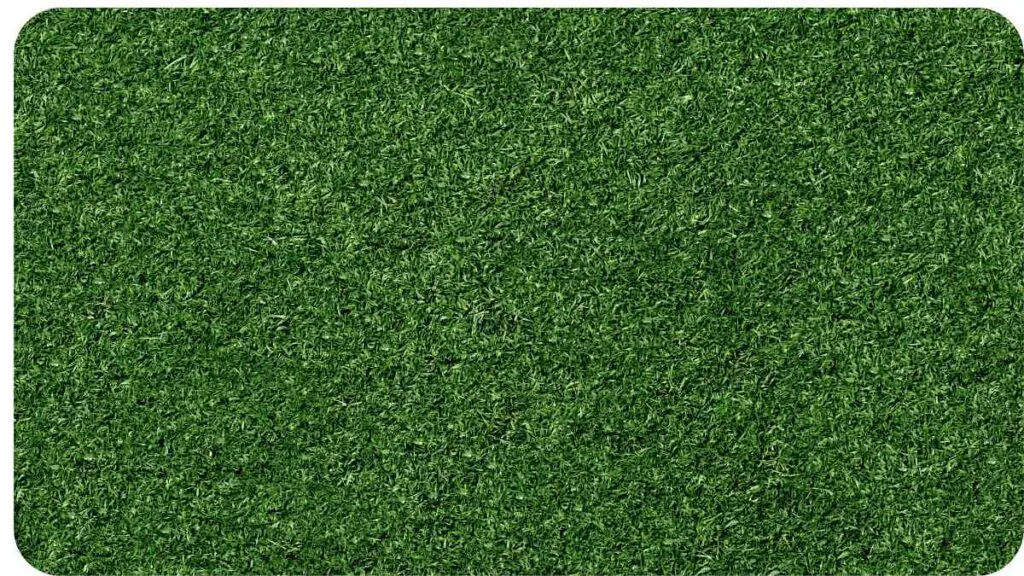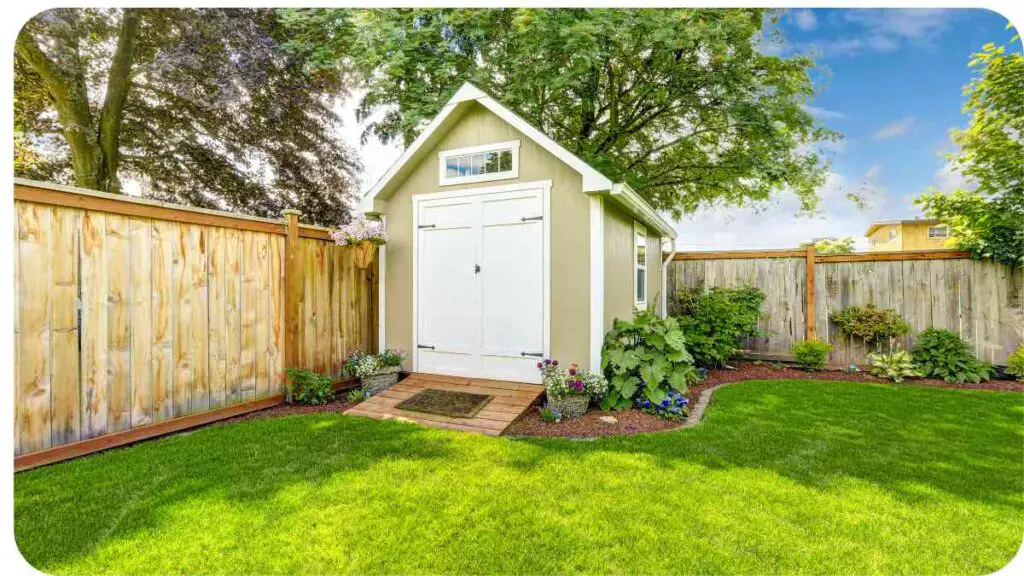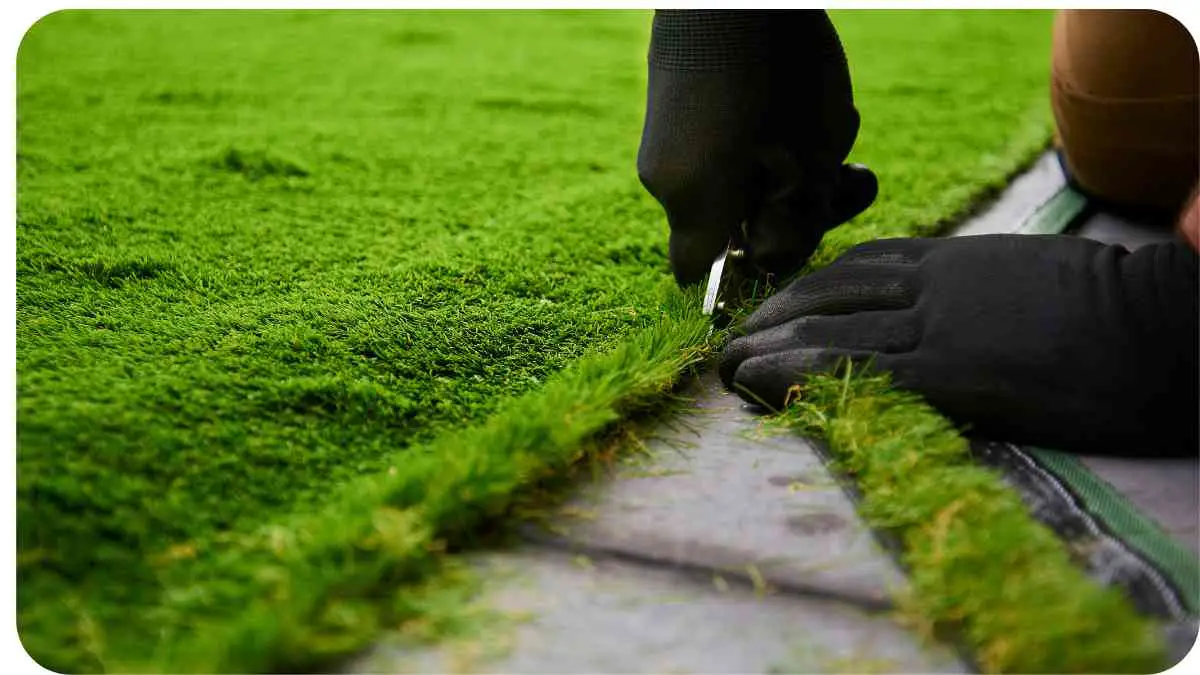Selecting high-quality artificial grass is crucial for a long-lasting and appealing lawn. This guide provides expert tips on evaluating artificial grass quality, from conducting pull tests to understanding UV resistance.
Learn how to make an informed decision and ensure your investment stands the test of time.
| Takeaway |
|---|
| Artificial grass quality can vary depending on factors such as material, density, and backing. |
| When choosing artificial grass, consider the quality and durability of the product. |
| Proper maintenance is crucial to extending the lifespan of your artificial grass. |
| If you live in the UK, make sure to choose artificial grass that is suitable for the local climate. |
| Installing artificial grass can be done yourself with proper guidance and tools. |
| The total cost of your artificial grass installation will vary depending on factors such as material, size, and labor. |
Updated Section: Assessing Quality through the Pull Test
One effective method for gauging the quality of artificial grass is the pull test. This straightforward examination involves applying force to the grass to evaluate its stability and durability.
Quality Indicator 1: Resistance and Flexibility
High-quality artificial grass should exhibit a balance between resistance and flexibility. When pulling on the grass, it should not easily detach from its backing. However, a crucial element is the flex of the blades; they should yield slightly under pressure, resembling the natural movement of real grass.
Interpretation of Results:
- Positive Sign: If, when applying force, the grass maintains its position without detaching and the blades show a degree of flex, this indicates a robust and durable product.
- Negative Sign: Conversely, if significant force is applied with little to no resistance, it suggests lower quality. Such grass may not endure the wear and tear of a garden or yard environment and could have a shorter lifespan.
When choosing artificial grass, consider the quality and durability of the product. Be wary of low-cost options that may be of poor quality. Read our beginner guide on how to choose the best artificial grass to learn more about the factors you should consider before making a purchase.
Updated Section: Evaluating Artificial Grass Thickness for Endurance

Examining the thickness of artificial grass is a critical step in ensuring its longevity and performance. This aspect directly influences how well the installation withstands various conditions over time.
Thickness Guidelines for Optimal Performance:
The recommended minimum thickness for high-quality synthetic lawns is 50mm. However, specific requirements may necessitate variations:
- High-Traffic Areas: Increase the thickness to 70mm for spaces prone to heavy use, such as pathways or golf greens. This additional thickness enhances durability in areas with frequent foot traffic.
- Smaller Spaces: For more confined areas like patios and balconies, a thinner solution in the range of 40-50mm is suitable. This offers a balanced compromise, maintaining quality while catering to space constraints.
Importance of Supplier Transparency:
When comparing products from different suppliers, ensure they provide detailed information on the exact dimensions of their artificial grass. This transparency allows you to make accurate comparisons tailored to your specific needs. Understanding the thickness variations enables you to select artificial grass that aligns perfectly with your intended use and performance expectations.
Artificial Grass Thickness Guide
| Thickness | Description |
|---|---|
| 10mm | Best for balconies and indoor spaces with low foot traffic. |
| 20mm | Ideal for residential landscaping and low to medium foot traffic areas. |
| 30mm | Good for gardens, playgrounds, and high traffic areas. |
| 40mm | Suitable for sports and commercial applications, as well as high traffic areas. |
| 50mm and above | Ideal for professional sports applications and landscaping that requires a lush, soft appearance. |
Updated Section: Ensuring Safety with Flame Resistance Testing
Verifying the fire resistance of artificial grass is a crucial step in ensuring the safety of your garden or outdoor space. Fire resistance implies the grass can withstand exposure to an open flame for at least 4 seconds without igniting or burning up.
Testing Procedure:
To assess fire resistance, a simple yet effective method involves using a match or lighter to apply a flame to the artificial grass. It is essential to exercise caution during this test to prevent personal injury or the unintentional ignition of surrounding objects.
Interpreting Results:
- Positive Result: If the artificial grass withstands the flame for the specified duration without catching fire, it meets the necessary fire resistance criteria. This is a positive indication of a safe product for your garden.
- Negative Result: Should the grass ignite or fail to endure the flame for the required duration, it is advisable to explore alternative options. Inadequate fire resistance poses a safety risk and may not be suitable for outdoor environments.
Proper maintenance is crucial to extending the lifespan of your artificial grass. Follow our landscape advice on caring for artificial grass to learn about the best practices for keeping your lawn in top condition.
Updated Section: Prolonging Lifespan with UV Resistance Evaluation
Assessing UV resistance is a pivotal consideration when choosing artificial grass, directly impacting the longevity of your lawn. UV resistance is quantified through the ASTM G85 test, utilizing a UV lamp to replicate sunlight exposure. This test determines how long it takes for UV radiation to induce a color change, typically from green to brown, in the sample green plastic material.
Understanding UV Resistance Grading:
- Low UV Resistance (Under 1500 hours): Grass with low UV resistance is prone to rapid fading and degradation. It’s advisable to avoid products in this category for a long-lasting lawn.
- Medium UV Resistance (1500-3000 hours): Suitable for several years of use but not recommended for areas with high sunlight exposure. Consider higher resistance for optimal durability.
- High UV Resistance (3000 hours and above): Grass with high UV resistance is the most durable and enduring option. Ideal for areas with intense sunlight, offering a lifespan of up to 15 years or more.
Significance of Extended Color Change Duration:
- Positive Indicator: A more prolonged duration for color change during the UV resistance test signifies a higher level of durability. Opt for artificial grass with extended resistance for enhanced longevity.
Artificial Grass UV Resistance Guide
| UV Resistance | Description |
|---|---|
| Low (under 1500 hours) | Artificial grass with low UV resistance is likely to fade and degrade quickly. It’s best to avoid products with low UV resistance if you want a long-lasting lawn. |
| Medium (1500-3000 hours) | Artificial grass with medium UV resistance may last for several years, but it is not suitable for areas with high sunlight exposure. |
| High (3000 hours and above) | Artificial grass with high UV resistance is the most durable and long-lasting option. It’s suitable for areas with high sunlight exposure and can last for up to 15 years or more. |
Updated Section: Ensuring Strength and Quality through Density Assessment
Evaluating the density of the artificial grass under consideration is a pivotal step in determining the overall quality of your installation. The density directly correlates with the grass’s sturdiness and resistance to damage, making it a critical factor for long-term durability.
Characteristics of High and Low-Density Grass:
- High-Density Grass: This type is characterized by robustness and resistance to damage. It offers a sturdy foundation, making it ideal for areas with higher foot traffic or potential wear.
- Low-Density Grass: Grass with lower density tends to be more flimsy and susceptible to tearing. It might lack the resilience needed for sustained use in outdoor environments.
Visual Assessment for Quality:
An effective way to gauge density is by visually inspecting the artificial turf sample. Higher quality products will exhibit a thicker pile, resembling the appearance and feel of real grass. This visual assessment helps in distinguishing between high and low-density options.
Measurement Methods:
Artificial grass thickness is commonly measured in two units: millimeters or ounces per square foot (oz/ft²). Most companies use the latter measurement, calculated based on weight per unit area.
Conversion Insight:
Understanding the conversion between these units provides clarity in comparing products. For reference, 1 oz/ft² equates to 0.03937 grams per square centimeter (g/cm²), translating to 1 gram/cm² = 0.03937 oz/ft² = 0.0369 oz/sq ft.
If you live in the UK, there are several factors to consider when selecting artificial grass. Check out our guide on choosing artificial grass in the UK to learn about the different types of grass available, as well as factors like drainage and maintenance requirements.
Sensory Evaluation: Assessing Texture for Personal Preference
Engaging your sense of touch is a crucial step in the evaluation of artificial grass, allowing you to discern its texture and comfort. This tactile assessment holds significance, as your personal preference for the feel of the grass can impact your overall satisfaction with the chosen product.
Guidance for Tactile Evaluation:
- Softness and Roughness: Run your fingers across the grass, noting whether it feels too soft or too rough for your liking. Optimal artificial grass strikes a balance, providing a comfortable yet resilient texture.
- Silkiness: Assess the level of silkiness in the grass. While personal preferences vary, a quality artificial grass should offer a pleasing silkiness without compromising on durability.
Importance of Personal Preference:
Your tactile experience with the grass plays a pivotal role in your decision-making process. If the grass feels uncomfortable or does not align with your preferences, it might influence your overall satisfaction with the installation.
Assessing Quality through Weight Measurement

Verifying the weight of artificial grass serves as a practical method to gauge its quality and suitability for your intended installation.
Weight Measurement Guidelines:
- Sample Measurement: Begin by measuring the weight of a small grass sample. This sample should represent the overall density and characteristics of the artificial grass product.
- Optimal Weight: A high-quality artificial grass product typically has a total weight of around 120 gms/sqm (grams per square meter). This benchmark reflects an ideal density that contributes to durability and longevity.
- Interpretation of Results:
- Below 120 gms/sqm: A weight below this figure indicates poor density, suggesting that the grass may lack the necessary robustness for sustained use. This could lead to a shorter lifespan.
- Exceeding 120 gms/sqm: While higher weight indicates denser grass, exceeding this value significantly may result in an artificial lawn that is too heavy for its intended structure. This excess weight might be unsuitable for certain lawn areas.
Balancing Density and Weight:
Striking the right balance between density and weight is crucial. Optimal weight ensures sufficient density for durability without compromising the structural integrity of the artificial lawn.
Installing artificial grass may seem like a daunting task, but with the right guidance, you can do it yourself. Follow our landscape advice on installing artificial grass for a step-by-step guide on how to lay and secure your turf.
Understanding Artificial Grass Types and Components
Now that you’re equipped with the knowledge of quality assessment, let’s delve into the different components that constitute artificial grass. Each element plays a vital role in determining the overall performance and characteristics of your chosen product.
1. Grass Types:
- Monofilament: This is the most budget-friendly option, consisting of thin strings less than 1mm in diameter. While cost-effective, it may lack the flexibility and durability of other options.
- Polyethylene: With slightly larger strands, polyethylene strikes a balance between affordability and user comfort. It remains thin enough for comfortable stepping while offering improved flexibility compared to monofilament.
- Polypropylene: Thicker than polyethylene, polypropylene requires gluing for installation, making it a durable and long-lasting choice. Its increased thickness contributes to enhanced resilience.
2. Backing Material:
- Natural Grass: Typically utilizes cotton backing. However, in the context of artificial grass, the backing is usually synthetic.
- Synthetic Grass: Employs nylon mesh backing for improved drainage and airflow. This feature helps maintain a vibrant green appearance for an extended period, surpassing the capabilities of natural alternatives.
3. Infill Material:
- Infill, often comprising silica sand mixed with water, resembles wet concrete. Once poured into molds and dried, it forms hard pellets similar to tiny marbles. This infill serves a dual purpose by providing cushioning underfoot and absorbing shock, preventing accidents for both children and pets.
- Exposure to sunlight outdoors may lead to the fading of infill pellets over time. However, for indoor installations, this isn’t a concern, ensuring long-lasting performance without direct sunlight exposure.
Understanding the nuances of grass types, backing materials, and infill components enables you to tailor your choice based on preferences, budget considerations, and specific needs for durability and comfort in your artificial grass installation.
Ensuring Confidence with Warranty Protection
Securing a warranty is a paramount step in guaranteeing the quality and reliability of your artificial grass purchase. A warranty serves as a commitment from the manufacturer to replace or repair the product in the event of damage, providing peace of mind for consumers.
Key Considerations for Warranty Assurance:
- Manufacturer’s Assurance: Look for a comprehensive warranty from the manufacturer, demonstrating their confidence in the quality and durability of the artificial grass.
- Warranty Duration: The length of the warranty varies among products and manufacturers. While most offerings include at least a one-year guarantee, it’s essential to understand the specific duration and coverage details.
- Terms and Conditions: Thoroughly review the terms and conditions of the warranty before making a purchase. This ensures a clear understanding of the coverage, limitations, and any specific requirements for maintenance or installation.
- Authorized Dealers: Purchasing from authorized dealers enhances warranty validity. Confirm with the seller that the product is covered by the manufacturer’s warranty to avoid potential complications.
- Transparency from Sellers: Be cautious if a company claims to sell authentic artificial grass but does not provide clear information about warranties on their website or invoice. Transparency in warranty details is a key indicator of a reputable and reliable product.
Artificial grass can be a cost-effective alternative to natural grass in the long run, but its upfront cost can vary depending on many factors. To help you make an informed decision, we created a guide on how to calculate the cost of artificial grass where we explain the different cost factors, share tips on how to budget for your project, and more.
Backing Assessment: Choosing the Right Bond for Durability
Ensuring the quality of the backing is a critical aspect of selecting artificial grass, influencing the overall strength and longevity of the installation. Three primary types of backing—glued, stitched, and sewn—offer distinct advantages based on individual preferences and specific use cases.
1. Glued Backing:
- Advantages: Glued backing creates a robust bond between the synthetic grass and its backing material, enhancing overall durability. This type is ideal for areas with minimal risk of tearing or puncturing.
- Considerations: Suited for installations without significant exposure to activities that may lead to damage, making it a preferred choice for standard lawn areas.
2. Stitched or Sewn Backing:
- Advantages: If you have pets or children with claws, a stitched or sewn backing provides additional resistance against tearing. This type of backing is less prone to damage from sharp objects.
- Considerations: While offering increased tear resistance, stitched or sewn backing may not provide the same level of overall strength as a glued backing. It is a suitable choice for households with pets or active children.
Tailoring Backing to Specific Needs:
Consider your lifestyle and potential risks when choosing the backing type. If your lawn is primarily for leisure and aesthetic purposes, a glued backing may be sufficient. For households with pets or playful children, opting for a stitched or sewn backing adds an extra layer of tear resistance.
Balancing Durability and Tear Resistance:
Balancing the need for overall durability with specific tear resistance requirements ensures that the chosen backing type aligns with the intended use of the artificial grass, contributing to a long-lasting and resilient outdoor space.
Maintaining Longevity: Preventing Shedding in Artificial Grass

Preventing shedding in artificial grass is essential for maintaining a lush and vibrant appearance over time. Shedding occurs when the grass fibers begin to break down, resulting in a thin and worn-out appearance. To ensure a resilient and enduring lawn, take proactive measures to prevent shedding.
Key Strategies to Prevent Shedding:
- Optimal Density: Choose artificial turf with a density around 100 blades per square inch (lpsi). This density level contributes to the overall strength of the grass, minimizing the risk of shedding.
- Routine Inspection: Upon the initial installation of your new lawn, conduct daily inspections for at least two weeks. Regularly check for any signs of shedding or wear in the grass fibers.
- Early Intervention: If shedding is observed during the initial inspection period, take prompt action. Contact the manufacturer or supplier immediately to address the issue and implement corrective measures before it escalates.
Importance of Density in Shed Prevention:
The density of artificial grass plays a crucial role in preventing shedding. Opting for a higher density ensures a robust and resilient turf that can withstand daily use and environmental factors without compromising its appearance.
Commitment to Long-Term Maintenance:
By actively monitoring your artificial grass for shedding during the initial weeks and promptly addressing any issues, you contribute to the long-term success of your installation. This commitment to maintenance enhances the overall lifespan and aesthetic appeal of your artificial lawn.
Navigating Maintenance: Understanding Artificial Grass Care
The maintenance demands of your artificial grass are contingent on the chosen type and system. While synthetic grass generally necessitates less maintenance compared to natural grass, variations exist among different turf systems. It’s crucial to recognize these distinctions to ensure the longevity and optimal appearance of your artificial lawn.
Key Maintenance Considerations:
- Maintenance Variation: The level of upkeep required varies among synthetic turf systems. Some may demand minimal attention, while others necessitate more frequent grooming and care.
- Professional Guidance: Before installing artificial turf at your home or business, consult with a professional to gain insights into the specific maintenance needs of the chosen system. Professionals can provide tailored advice on the frequency and nature of maintenance tasks.
- Understanding System Differences: Not all synthetic turf systems are created equal. Each system may have unique characteristics that influence its maintenance requirements. Familiarize yourself with the specific care guidelines provided by the manufacturer.
Benefits of Synthetic Grass:
- Reduced Maintenance: In general, synthetic grass requires less maintenance compared to natural grass, making it an attractive option for those seeking a low-maintenance alternative.
- Versatility: Synthetic grass can be used in a variety of areas, expanding its applicability beyond traditional lawn spaces.
Commitment to Regular Care:
While synthetic grass offers the advantage of reduced maintenance, a commitment to regular care ensures the sustained beauty and functionality of the installation. Understanding the specific demands of your chosen artificial grass system empowers you to establish a maintenance routine that aligns with its unique characteristics and enhances its long-term performance.
Conclusion
In conclusion, we trust that this guide has provided valuable insights into assessing the quality and maintenance requirements of artificial grass. Understanding how to evaluate the various aspects of artificial grass ensures informed decision-making and promotes satisfaction with your purchase.
By employing the recommended methods for testing quality, such as conducting pull tests, assessing thickness, checking for flame and UV resistance, evaluating density, and considering backing types, you can confidently select artificial grass that meets your standards for durability and performance.
Furthermore, recognizing the importance of maintenance in preserving the longevity and appearance of your artificial grass installation is paramount. Whether opting for low-maintenance synthetic grass or systems requiring more frequent care, a proactive approach to maintenance ensures the continued enjoyment of your outdoor space for years to come.
At the core of our guide lies a commitment to your satisfaction and the durability of your investment. We aim to equip you with the knowledge and tools necessary to make informed decisions and maintain the beauty of your artificial grass for the long term.
Thank you for allowing us to be part of your artificial grass journey. Here’s to creating vibrant, resilient outdoor spaces that bring joy and satisfaction for years to come!
Further Reading
If you would like to learn more about checking the quality of artificial grass, we recommend checking out the following resources:
Buyer Beware: How to Spot Fake Artificial Grass from ProGreen Synthetic Grass. This article provides practical tips on how to spot fake artificial grass, and what to look for when choosing the right product for your needs.
How to Check the Quality of Synthetic Grass? from Surekha Sports. In this guide, you’ll find everything you need to know about checking the quality of synthetic grass, from examining the fibers to assessing the backing.
How to Spot Poor Quality Artificial Grass from NeoGrass. This article offers an in-depth look at the common signs of poor quality artificial grass, including poor drainage and uneven color.
FAQ
What are the common signs of poor quality artificial grass?
Some common signs of poor quality artificial grass include uneven color and texture, inferior backing, poor drainage, and low-quality fibers.
Is it possible to install artificial grass myself?
Yes, it is possible to install artificial grass yourself with the correct guidance, tools, and materials. You may also want to consider hiring a professional to ensure the best results.
Can artificial grass be recycled?
Yes, artificial grass can be recycled, but it depends on the type of product and the recycling facilities available in your area. Contact your local recycling center for more information.
How long does artificial grass last?
The lifespan of artificial grass depends on a variety of factors, including the quality of the materials, the amount of foot traffic it receives, and the level of maintenance provided. On average, high-quality artificial grass can last up to 15 years or more.
Is artificial grass safe for pets and children?
Yes, artificial grass is safe for pets and children. However, it is important to choose a product that is non-toxic, has good drainage, and is easy to clean to ensure the best results.

Hi! My name is Hellen James, and I’m here to help you with your home-maintenance needs. Whether it’s building a better yard or just trying to fix a garden—I can show you how.


